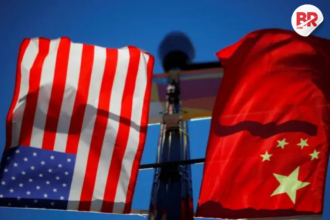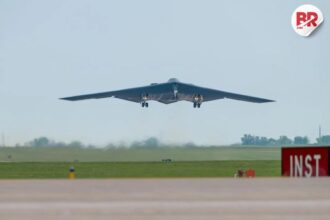
U.S. President Donald Trump has signed a tariff deal with Japan that’s making headlines—and moving markets. The deal cuts U.S. tariffs on Japanese auto imports from 25% to 15%. In return, Japan is bringing in a huge $550 billion investment and loan package for U.S. markets.
This new tariff deal also stops fresh tariffs on other Japanese goods that were supposed to begin August 1. It’s a big win for Japan’s auto industry, which sends over a quarter of its exports to the U.S.

The Nikkei index in Japan jumped more than 3% after the announcement. Toyota rose over 14%, while Honda surged nearly 12%. Even South Korean car stocks saw a boost, as investors bet South Korea might land a similar deal.
“This is the largest TRADE DEAL in history with Japan,” Trump posted proudly on Truth Social.
Former Japanese official Ishiba, who is expected to step down soon, praised the outcome. He said Japan got one of the best tariff reductions among trade partners with a surplus. The investment package includes help for Japanese firms to build supply chains in semiconductors and pharma—both critical sectors.
Japan has also agreed to buy more U.S. farm products, including rice. But Japanese leaders said their agriculture was not compromised in the deal.
Also Read Indonesia Makes $8B US Deal for Refineries After Tariff Cut Boosts Trade
However, not everyone is cheering. U.S. automakers say the deal favors Japan too much. They argue that Japanese cars with little U.S. content get lower tariffs, while cars made in North America with U.S. parts still face a 25% tax. That hurts U.S. industry, they say.
In 2024, the U.S. imported over $55 billion in cars and parts from Japan—but sold only $2 billion worth into Japan. This imbalance has long frustrated Trump.
Trade between the two nations hit $230 billion last year. Japan had a $70 billion surplus. It is also the largest foreign investor in the U.S., with $2 trillion in U.S. markets and over $1.2 trillion in direct investments.
Trump also hinted at another big plan—a joint U.S.-Japan gas pipeline in Alaska.
This tariff deal is the latest in Trump’s trade blitz. He’s already announced deals with the UK, Vietnam, and Indonesia, and paused the trade fight with China. EU negotiators are next, landing in Washington this week.
With Trump racing toward the August 1 deadline for broader tariffs, this Japan deal shows how high the stakes are—and how fast things are moving.
Also Read Tata Motors, M&M, Maruti Gain Up to 3% as US-Japan Deal Lifts Auto Stocks Globally












